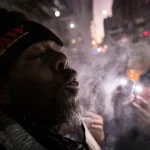
–>
May 13, 2022
Over the centuries, Northern Ireland has been invaded by various groups, Celts, Vikings, Normans, Anglo-Saxons, Irish-speaking Gaels, and Scottish Presbyterians. The province of Ulster, was marked by two distinct, often feuding groups, the indigenous Roman Catholic Irish, and the immigrant Protestant English and Scots. In 1800 the Act of Union was signed. Partition of the island took place and an independent Ireland emerged. In May 1921 Northern Ireland, formed of six of the nine counties of the traditional Irish province of Ulster, was officially separated from the rest of the island. Northern Island, one sixth of the island, and one-third Catholic, became a constituent part of the UK with its own devolved parliament. The southern part became the Irish Free State, then left the British Commonwealth and became a republic.
‘); googletag.cmd.push(function () { googletag.display(‘div-gpt-ad-1609268089992-0’); }); }
The border between the two does not follow any geographical or natural boundaries, sometimes bisecting villages and causing communal strife. The issue of the border has become increasingly controversial because of the Brexit negotiations and the trade arrangements with the European Union.
It has become urgent as the result of the election for the Northern Ireland legislature, Stormont, on May 6, 2022.
For the first time, the Sinn Fein, the former political wing of the IRA, won more seats than any other party, thus allowing Sinn Fein to head the coalition government. In first preference votes, Sinn Fein got 250,000 votes, 29%, the Democratic Unionist Party 184,000, 21.3%, and Alliance 116,000 votes. Seats in the Stormont are allotted in proportion to share of party votes. Therefore, SF got 27 of the 90 seats in the assembly, the DUP 24, and Alliance 17.
‘); googletag.cmd.push(function () { googletag.display(‘div-gpt-ad-1609270365559-0’); }); }
This result was a surprise. For over a hundred years, a pro-British party has won every election to the Stormont. Even since the Good Friday agreement in 1998, the arrangement by which the Unionists and nationalists share power, the unionist party came in first. The first minister was the DUP leader, the deputy leader came from Sinn Fein.
Now, the Sinn Fein has taken over, leading to difficulties in the UK, and relations with the EU.
For electoral strategy, Sinn Fein reinvented itself and with seemingly no link to the IRA, focused on economic and centrist issues such as jobs, health care, and cost of living and less on the issue of possible Irish unity or on religion. Nevertheless, the increased support for the party raises two issues: one is the question of Irish unity; the other is possible tension and friction between the two religions. At the last census in Northern Ireland, Protestants outnumbered Catholics by 3%. Recent projections are that by 2025 Catholics will be the majority religion. However, three factors are pertinent: religious affiliation and political choice are not axiomatic; secondly, Northern Irish society has become more secular; and thirdly, the present context is one which is indicating some change in the general population of the country from perception of citizens from being “British” to being “English.”
 In Northern Ireland the Unionists have been divided, largely because of disagreements over Brexit arrangements and the Protocol, the complex arrangement that imposes border checks on goods from mainland Britain. To change this would produce difficulties both with the EU and with the U.S.
In Northern Ireland the Unionists have been divided, largely because of disagreements over Brexit arrangements and the Protocol, the complex arrangement that imposes border checks on goods from mainland Britain. To change this would produce difficulties both with the EU and with the U.S.
The Unionist have warned that they would not return to power sharing arrangements unless there was “decisive action” on trade rules. The constitutional problem therefore is that the presumed first minister Michele O’Neill, Sinn Fein deputy leader, who focused on centrist issues and made no mention of a possible referendum on a united Ireland, cannot form a coalition government without a DUP member as deputy prime minister.
The Protocol is a complex, controversial arrangement. Briefly, it sets trading rules for the British region and is designed to prevent a “hard” trade and customs border between Northern Ireland and the Republic. After Brexit, it created a border between Great Britain and Northern Island and imposed checks on some goods from Great Britain. It could result in prohibitions on certain products that did not comply with EU rules.
‘); googletag.cmd.push(function () { googletag.display(‘div-gpt-ad-1609268078422-0’); }); } if (publir_show_ads) { document.write(“
The arrangement is that, though Britain has left the EU, Northern Ireland would stay in the EU’s single market for goods and in its customs union. This is an inherent paradox. Northern Ireland is part of the UK, which has left the EU, but maintains the EU market rules. It avoids checks at the Irish land border, but created a new Irish sea border which makes trade with Britain more difficult. The Protocol is central because the controversy over it prevents formation of a government.
The British government in general has blamed the EU for “dogmatic” implementation of the Protocol which has caused trade disruption. In addition, Unionists hold that the Protocol has lowered the status of Northern Ireland in the United Kingdom. However, British politicians are divided on the Protocol. Some call for unilateral action, the creation of open lanes for goods travelling to Northern Ireland and the Republic. Others oppose this, arguing that such action would cause a trade war with the EU, and raise prices.
The EU holds thar the Protocol is an international agreement, not an option to be renegotiated. However, Prime Minister Boris Johnson proposes to allow businesses in Northern Ireland to disregard EU rules and regulations and to end the power of the European Court of Justice to rule on issues relating to the region. He argues as one justification for this position is that the EU proposals would mean chilled meats from Britain would need a certificate from a vet in order to enter NI.
Two other issues are present: relations between adherents of the two religions; and Irish unity.
What about Irish unity? The Stormont election showed this was not a pressing issue. A recent public opinion poll showed that only 30% of Irish voters would vote for a united Ireland.
The north is not an economic prize. The south is far more successful, and would have to give Northern Ireland large subsidies. Public spending per person in Northern Ireland is higher than anywhere else in the UK and tax revenues are lower. GDP per capita is almost three times higher in the Republic of Ireland. Belfast is no longer the engineering and manufacturing center it once was, and Northern Ireland has few globally competitive industries.
Will Northern Ireland resemble Scotland, where tension has been reduced between the two religions, shown by the peaceful, no longer violent, rivalry between the largely Catholic Celtic and largely Protestant Rangers football teams, rejecting sectarianism and focusing on class and economics rather than religion?
Image: Pixabay
<!– if(page_width_onload <= 479) { document.write("
“); googletag.cmd.push(function() { googletag.display(‘div-gpt-ad-1345489840937-4’); }); } –> If you experience technical problems, please write to [email protected]
FOLLOW US ON
<!–
–>
<!– _qoptions={ qacct:”p-9bKF-NgTuSFM6″ }; ![]() –> <!—-> <!– var addthis_share = { email_template: “new_template” } –>
–> <!—-> <!– var addthis_share = { email_template: “new_template” } –>





